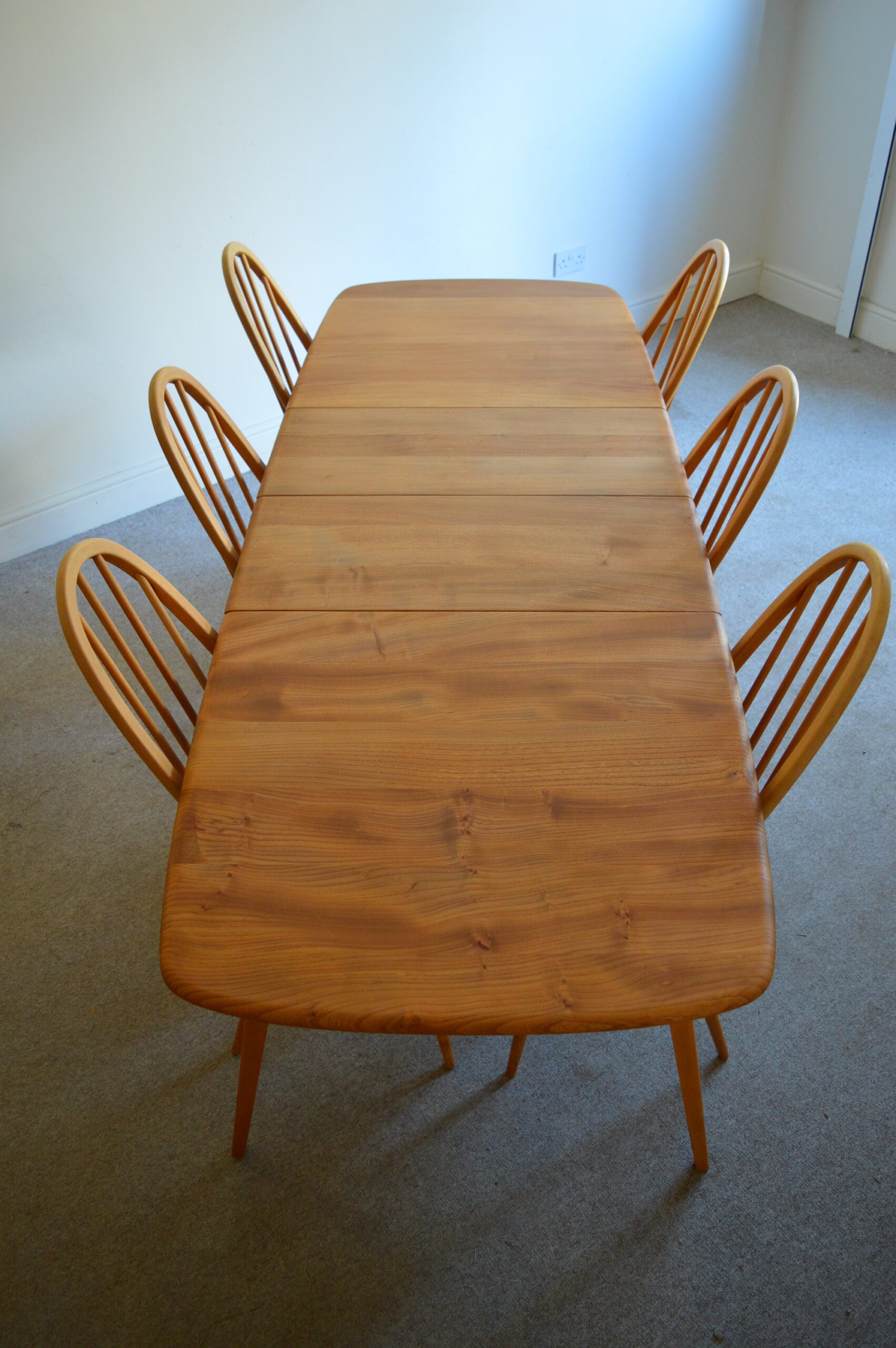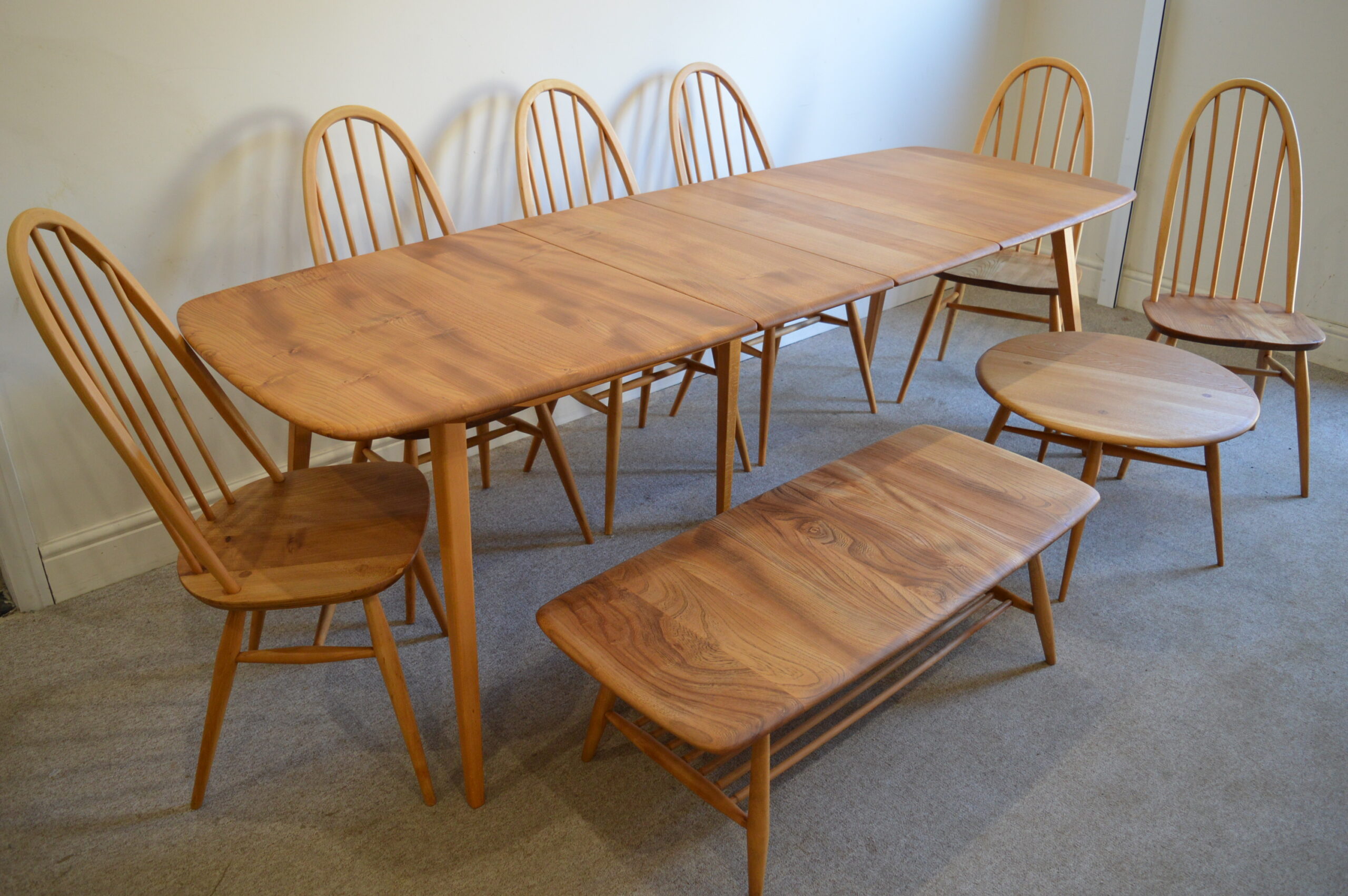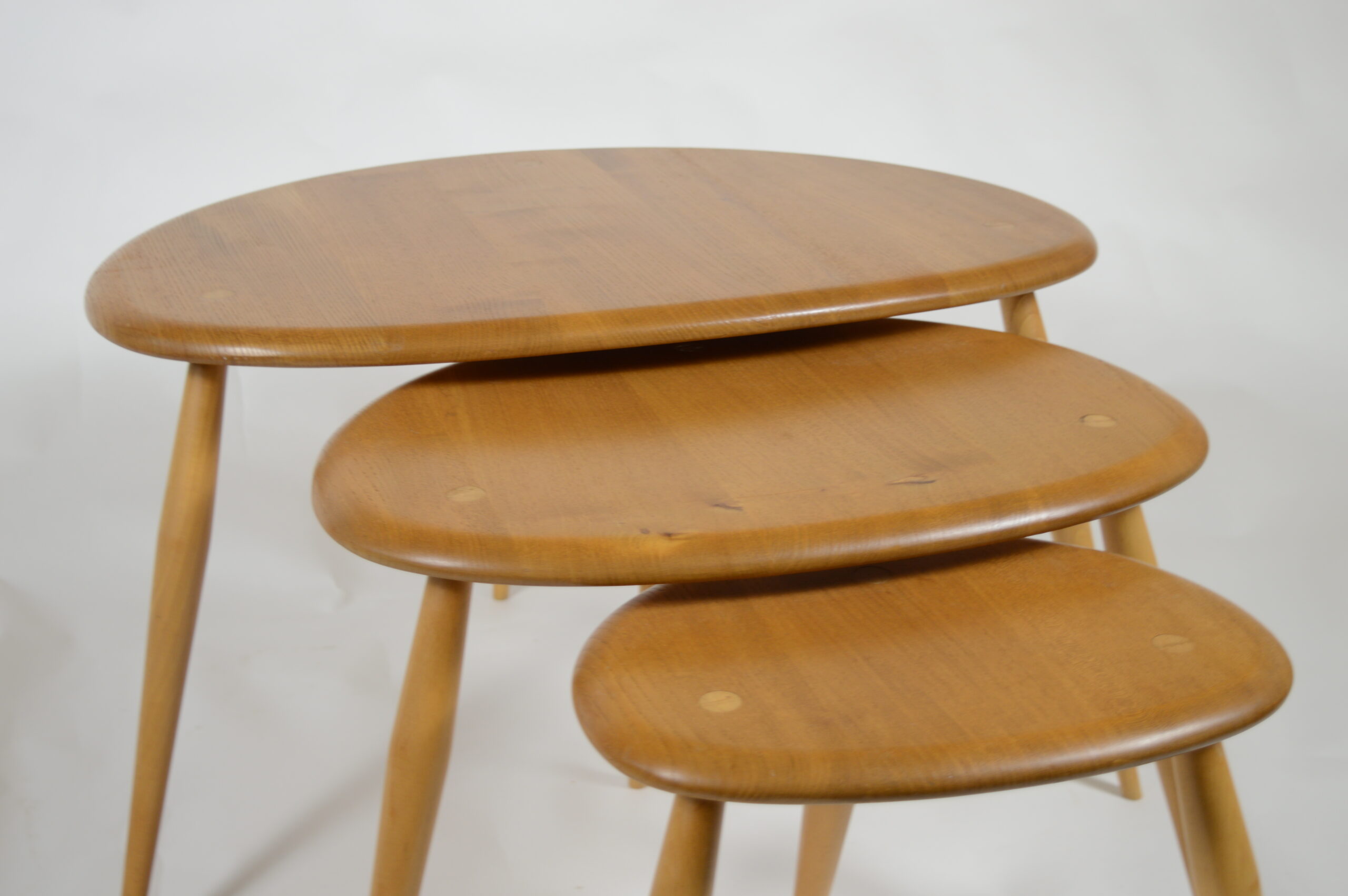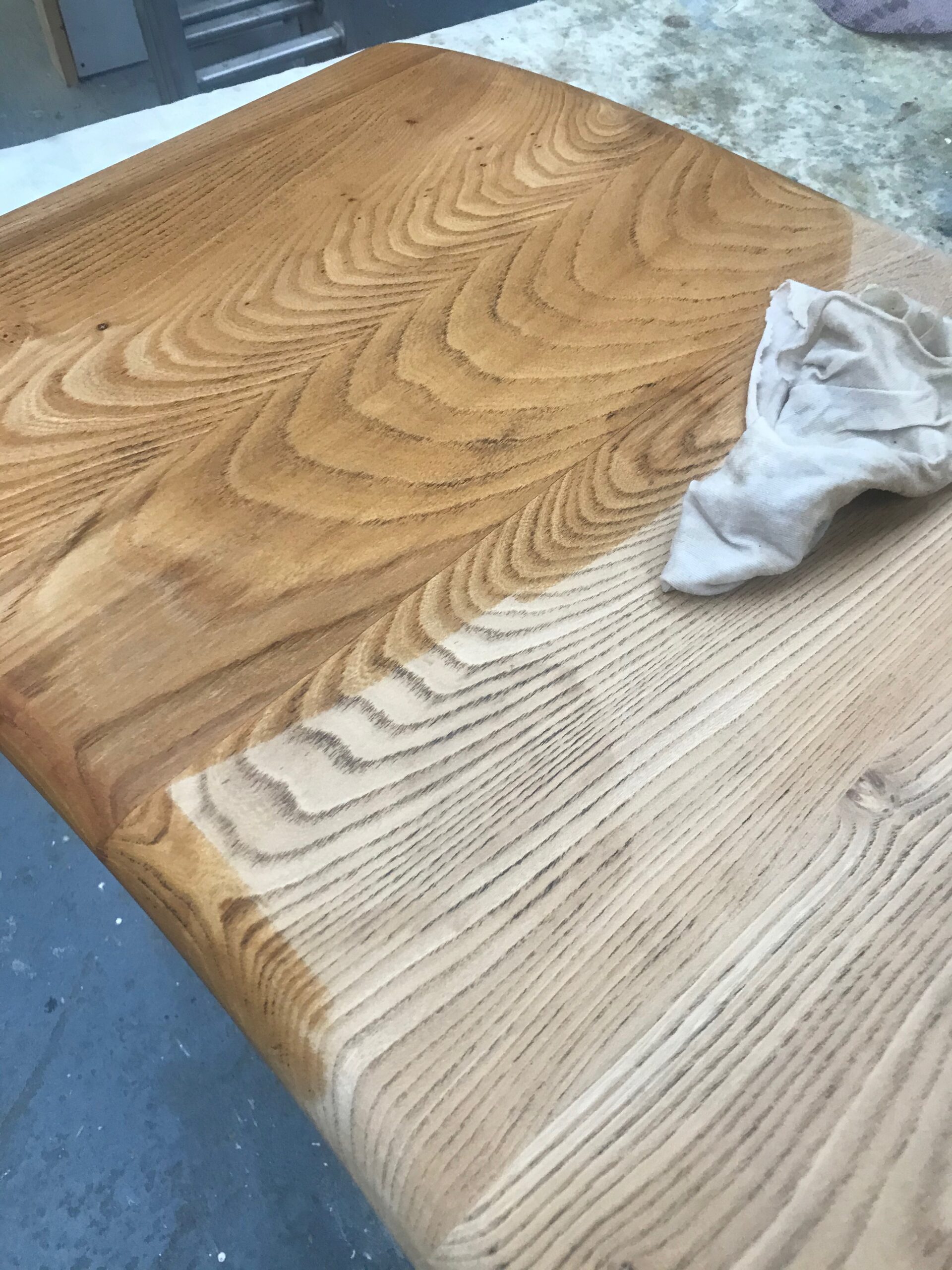
Ercol 510 table and 365 chairs
It seems that every few days I get a question about the best way to finish Ercol furniture as part of a restoration project. I hope that this blog, “Ercol furniture restoration – how we finish” will go some way to answering these various questions.
The first thing to consider is the product that we will use for finishing. Some time ago I published a blog (you can read it here (https://www.theandrewspartnership.co.uk/use-waxoil-finish/)) which explained why hand finishing with oil and wax is a better solution than a lacquered finish. This is true in the professional workshop and it is even more relevant in the DIY environment where spray equipment and facilities will be limited at best. Don’t be fooled by those who say “lacquer must be best because that’s what Ercol used”. This is a nonsense argument. Ercol used lacquer because it is the only commercially viable finish for volume furniture maker. Hand finishing has always been the method of choice for the finest pieces of furniture. And it should be the method of choice for your Ercol furniture restoration project.
A combination of oil and wax is also a far better finishing solution than wax on its own. A paste wax (such as Briwax) will not give long lasting protection to fine furniture in daily use. It is hard to apply well, needs frequent reapplication, tends to clog in hard-to-get- at places and is frequently disappointing to look at.
Our preferred solution, a “high solid” blend of oil and wax is relatively easy to apply, long lasting, gives excellent protection from most day -to-day hazards and produces a finish that looks great with plenty of “feel appeal”. The best commercially available product by far is Osmo High Solid Polyx Oil. I always suggest using the satin clear version (code 3032). This is used by many leading bespoke furniture makers.
So, if we are going to use Osmo, how do we apply it to get the finish that we want for our Ercol furniture restoration project? Many people will have their own ideas, but this is the system that I have used for many years and I haven’t found a better way yet.

1.I am assuming that the piece that you want to finish has had all old lacquer finish removed and repairs have been made. You should sand to either 180 grit or 240 grit. I tend to go to 180 on chairs and 240 on large flat surfaces such as tabletops. There is no need to sand further as you will be using abrasive pads later.
2. Apply a first coat of Osmo with a clean cotton rag (old sheets, T shirts etc work well or you can buy boxes of rags online). You want a generous but not excessive coat. Wipe to remove runs and blobs etc. Leave this coat for about 15 mins until it is tacky t the touch. This is very dependent on temperature and humidity. If it goes too far and becomes very sticky, don’t worry. Small pieces (such as a pebble table) can be tackled in one go. Larger and more fiddly pieces (a 203 armchair for example) are best divided into sections. As a guide I work on an Ercol 203 armchair in three sections (underneath, hoop back and sticks, seat fram and arms) – finish each section (steps 2 and 3) then move onto the next.

Ercol pebble tables - £695
3. Apply a second thin coat with a 320 grit abrasive pad (readily available online – https://www.axminstertools.com/mirka-mirlon- finishing-pads-ax851913). Use the pad as you would sandpaper, working with the grain. This coat loosens the first coat which has gone tacky. Immediately you have finished buff (polish vigorously) this coat. Buffing is hard work – it should make your arms tired. Use plenty of clean rags, turning them over frequently and discarding them when they are covered in Osmo. Stop when a clean rag stays clean. You will get through a lot of rags. This should leave you with a fine smooth finish.
4. Leave for 8 hours minimum (there is no maximum).
5. Repeat steps 2 and 3. Two coats is the minimum (three coats are better) to provide a good level of protection and should look very fine. In the workshop we apply multiple coats but that’s because we are perfectionists!

Ercol Extension Table
6. Key facts – plenty of rags, buff hard, leave for 8 hours between coats, at least two coats.
7. Never put wet rags or abrasive pads in the bin. Always leave them to dry flat and then dispose of them. Crumpled up, used rags can spontaneously combust.
I know that people will say “do this” or “don’t do that” – all I can say is that this system has served me (and many very fine craftsmen extremely well for many years. And whilst it uses modern, environmentally friendly products it is based on very traditional methods o wood finishing.
I hope that you have found “Ercol furniture restoration – how we finish” a useful blog. As always I will do my best to reply to any questions that you might have. You can contact me using the link below.
